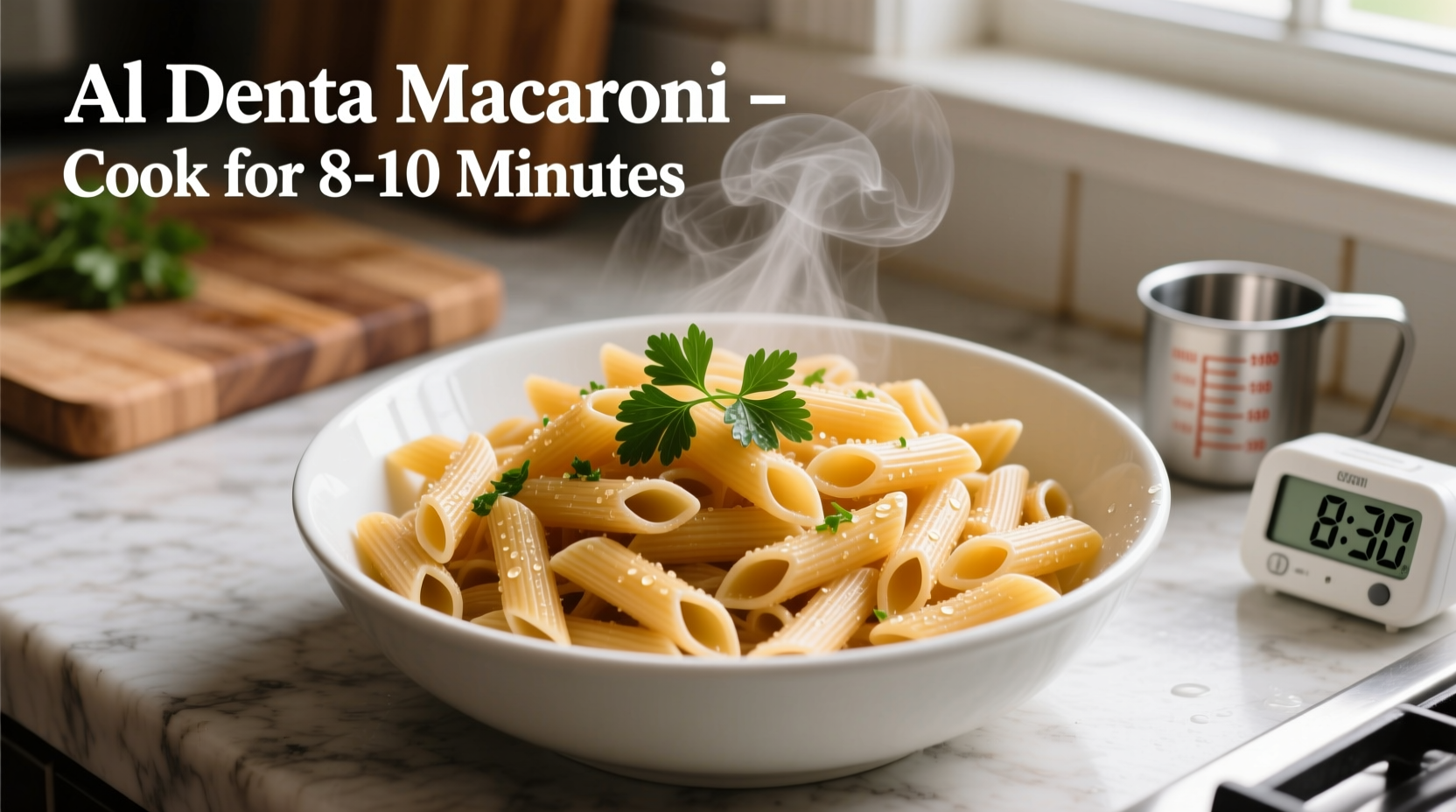Perfectly cooked al dente macaroni transforms an ordinary pasta dish into something extraordinary. That ideal texture—firm to the bite yet fully cooked—is the hallmark of professional Italian cooking and makes all the difference in how sauce clings and flavors develop. But getting it right requires more than just following package instructions.
What Exactly Is Al Dente Macaroni?
The term "al dente" literally translates to "to the tooth" in Italian. For macaroni, this means the pasta should offer a slight resistance when you bite into it, without any hard, chalky center. Properly cooked al dente macaroni maintains its shape during tossing with sauce and continues to cook slightly from residual heat after draining.
According to the American Pasta Association, al dente pasta has a thin, pale core visible when cut in half—not raw, but not completely uniform in color either. This texture allows the pasta to hold sauces better and provides a more satisfying eating experience compared to overcooked, mushy alternatives.
Factors That Affect Your Macaroni Cooking Time
While most dried macaroni reaches al dente in 8-10 minutes, several variables influence the exact timing:
- Pasta thickness: Standard elbow macaroni cooks faster than jumbo or whole wheat varieties
- Water temperature: Starting with cold water versus boiling water changes timing
- Water-to-pasta ratio: Too little water makes pasta sticky and affects cooking time
- Altitude: Above 3,000 feet, water boils at lower temperatures, requiring longer cooking
- Brand differences: Some manufacturers use different drying processes that affect rehydration
| Pasta Type | Standard Cooking Time | Al Dente Time | Texture Characteristics |
|---|---|---|---|
| Regular elbow macaroni | 10-12 minutes | 8-10 minutes | Firm bite, slight resistance |
| Jumbo macaroni | 12-14 minutes | 10-12 minutes | Denser texture, chewier bite |
| Whole wheat macaroni | 11-13 minutes | 9-11 minutes | Firmer texture, nuttier flavor |
| Gluten-free macaroni | 7-9 minutes | 6-8 minutes | Less forgiving, quick transition from under to overcooked |
Step-by-Step Guide to Perfect Al Dente Macaroni
Preparation Essentials
Use 4-6 quarts of water per pound of pasta—crowded water leads to uneven cooking. Add 1-2 tablespoons of coarse salt per gallon of water after the water reaches a rolling boil. Contrary to popular belief, salt doesn't significantly raise the boiling point but does enhance flavor absorption.
The Cooking Process
- Bring water to a vigorous rolling boil
- Add salt, then pasta all at once
- Stir immediately to prevent sticking
- Set timer for 2 minutes less than package suggests
- Stir occasionally during cooking (2-3 times total)
- Begin testing 2 minutes before suggested al dente time
How to Test for True Al Dente
The only reliable method is tasting. Remove a piece with a slotted spoon, cool slightly, then bite. Perfect al dente macaroni should:
- Offer slight resistance in the center
- Have no hard, chalky core
- Maintain its shape without being brittle
- Feel tender but not soft or mushy
As noted in culinary research from the University of Bologna's Department of Food Science, the starch gelatinization process in pasta reaches optimal texture at approximately 83°C (181°F) internally—a point best determined by taste rather than strict timing.

Troubleshooting Common Al Dente Challenges
When Your Macaroni Isn't Reaching Al Dente
If your macaroni consistently fails to reach proper al dente texture, consider these factors:
- Water temperature drop: Adding too much pasta at once lowers water temperature significantly
- Insufficient salt: Properly salted water helps control starch release
- Old pasta: Dried pasta loses moisture over time, requiring longer cooking
- Altitude effects: At higher elevations, water boils at lower temperatures
Professional chefs in Denver (at 5,280 feet elevation) typically add 2-3 minutes to standard cooking times, as documented by the Culinary Institute of America's altitude cooking studies.
Rescuing Overcooked or Undercooked Pasta
Overcooked pasta: Immediately shock in ice water to stop cooking, then briefly sauté in olive oil to restore some texture. Works best for dishes like pasta salad.
Undercooked pasta: Return to boiling water for 30-60 seconds. Avoid adding cold water, which creates uneven texture.
Why Al Dente Matters for Macaroni Specifically
Macaroni's curved shape and hollow center make proper al dente texture particularly important. Undercooked macaroni leaves an unpleasant raw center, while overcooked macaroni collapses the tube structure, preventing sauce from clinging properly inside the curve.
Food science research shows that al dente pasta has a lower glycemic index than overcooked pasta, as the starch granules remain more intact. This makes properly cooked macaroni not just more delicious but potentially healthier.
Final Tips for Consistent Results
- Reserve 1 cup of pasta water before draining for sauce adjustment
- Always finish cooking in the sauce for 1-2 minutes
- Never rinse pasta unless making cold salad
- Account for carryover cooking—pasta continues cooking for 1-2 minutes after draining











 浙公网安备
33010002000092号
浙公网安备
33010002000092号 浙B2-20120091-4
浙B2-20120091-4